Abstract
Twenty-three Hg2+ resistant cultures were isolated from sediment of the Savannah River in Georgia; of these, 14 were gram-negative short rods belonging to the genera Escherichia and Enterobacter, six were gram-positive cocci (three Staphylococcus sp. and three Streptococcus sp.) and three were Bacillus sp. All the Escherichia, Enterobacter, and the Bacillus strain were more resistant to Hg2+ than the strains of staphylococci and streptococci. Adaptation using serial dilutions and concentration gradient agar plate techniques showed that it was possible to select a Hg2+-resistant strain from a parent culture identified as Enterobacter aerogenes. This culture resisted 1,200 μg of Hg2+ per ml of medium and produced methyl mercury from HgCl2, but was unable to convert Hg2+ to volatile elemental mercury (Hg0). Under constant aeration (i.e., submerged culture), slightly more methyl mercury was formed than in the absence of aeration. Production of methyl mercury was cyclic in nature and slightly decreased if DL-homocysteine was present in media, but increased with methyl-cobalamine. It is concluded that the bacterial production of methyl mercury may be a means of resistance and detoxification against mercurials in which inorganic Hg2+ is converted to organic form and secreted into the environment.
Full text
PDF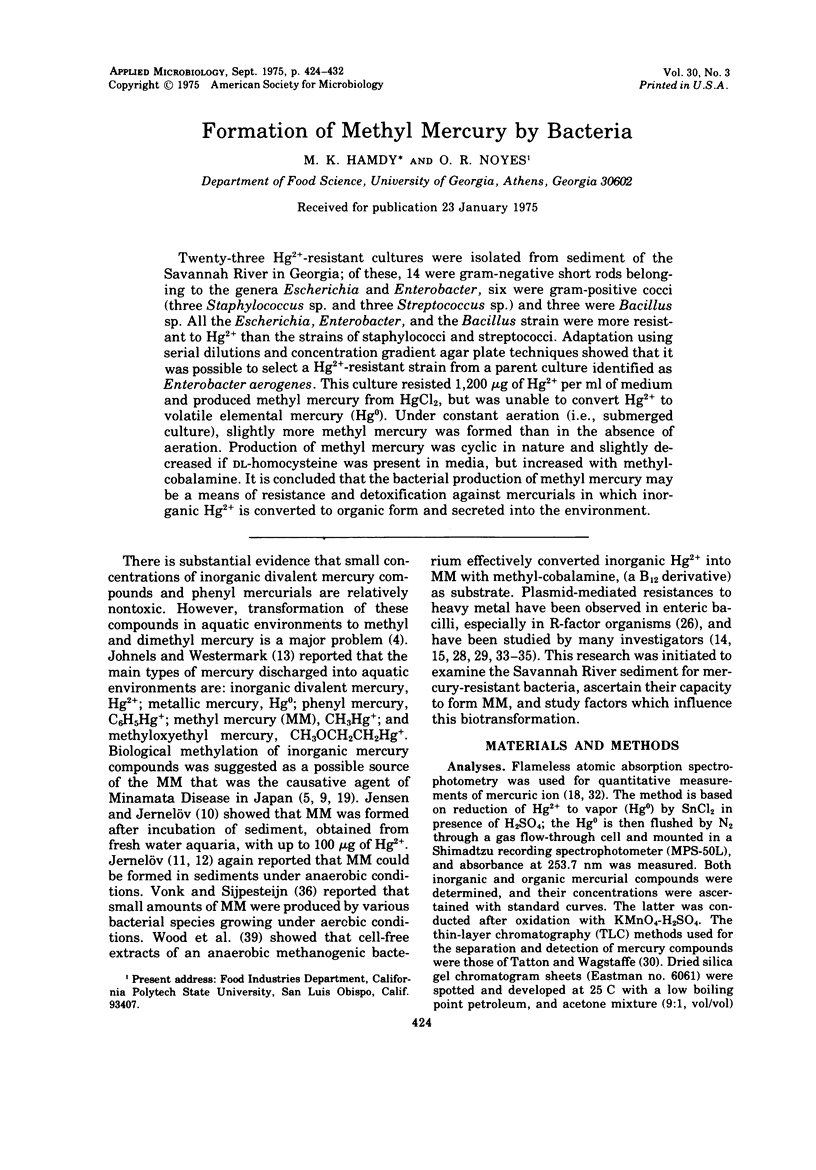
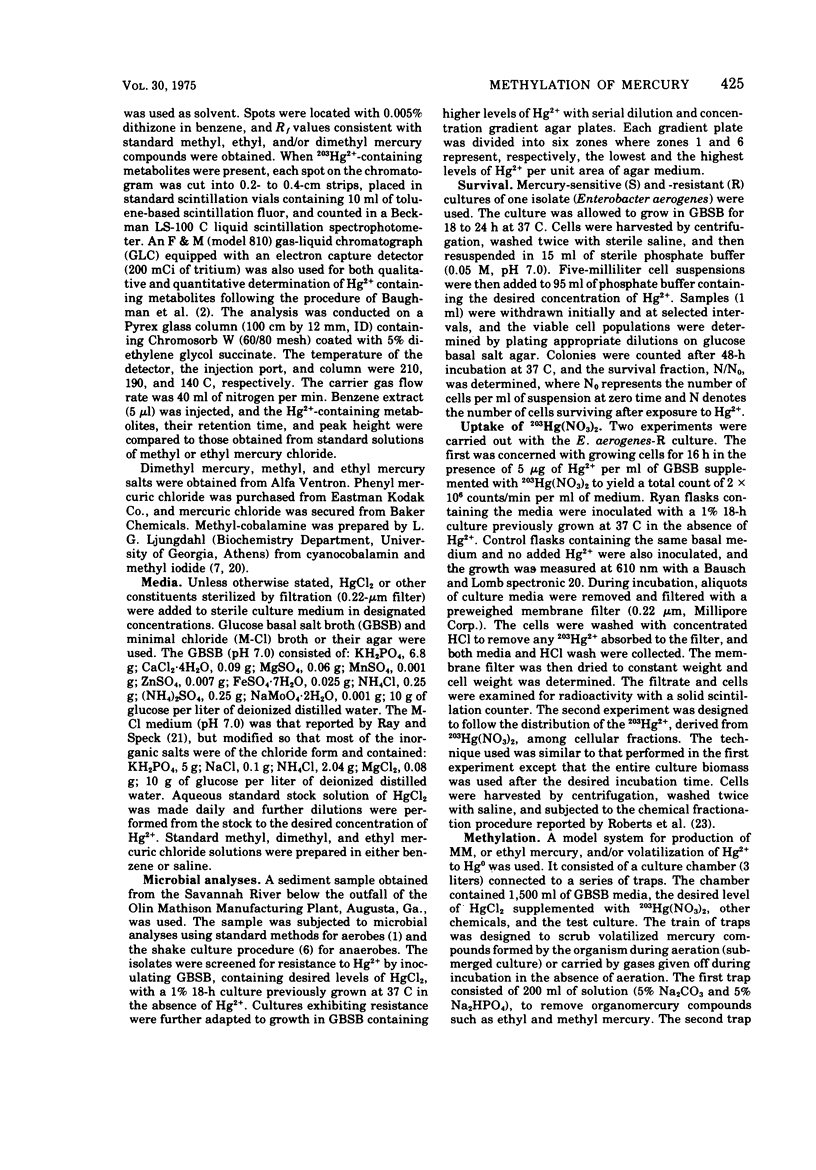
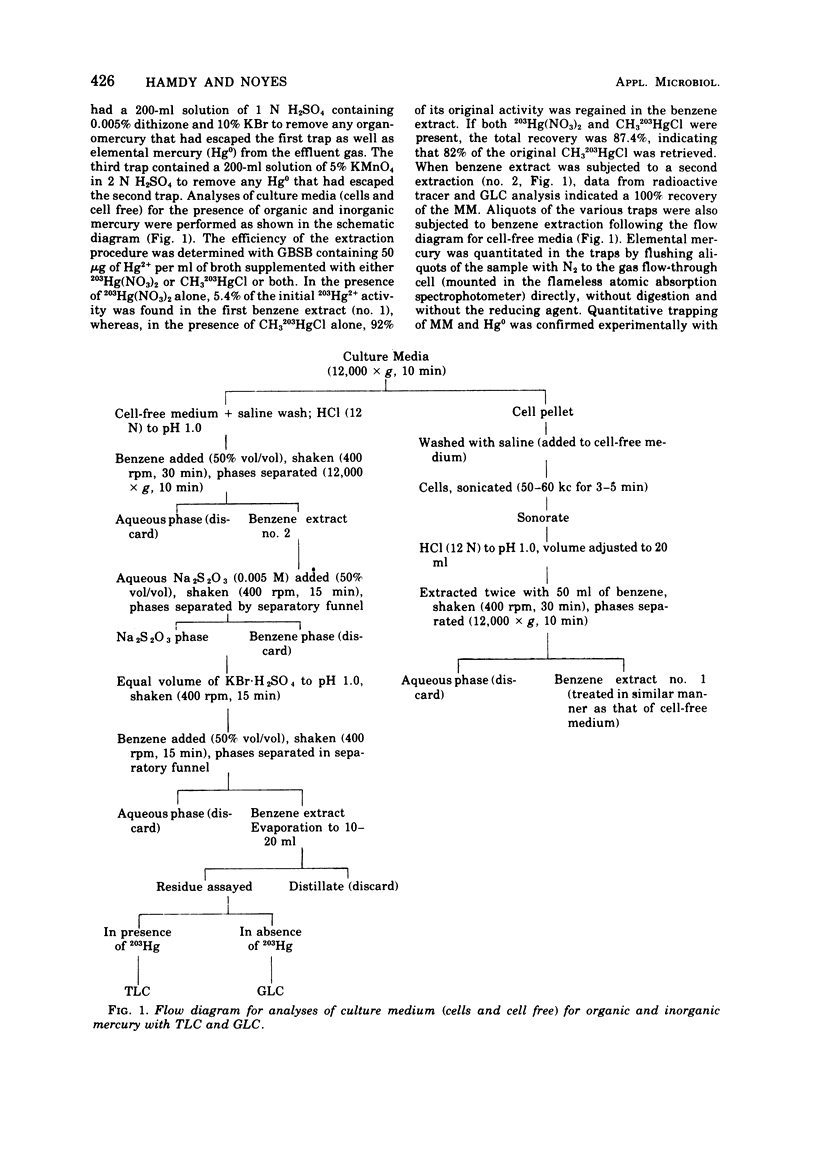
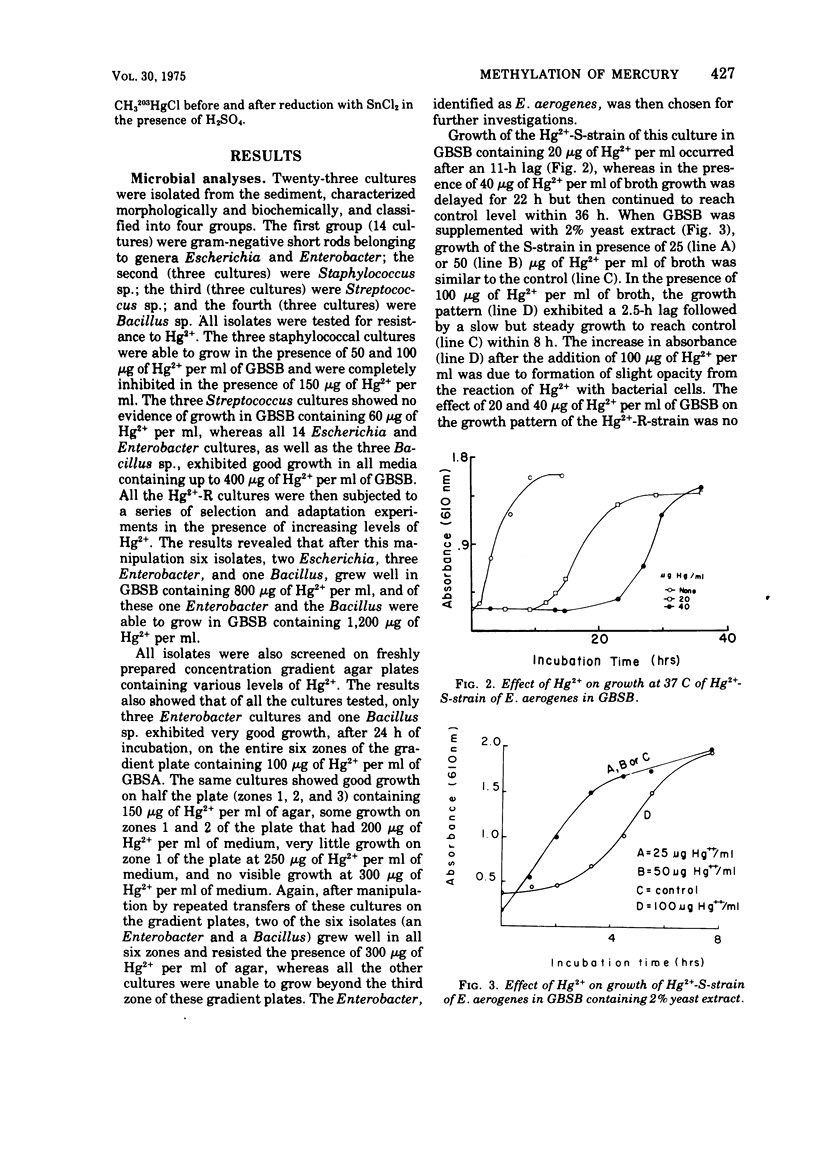
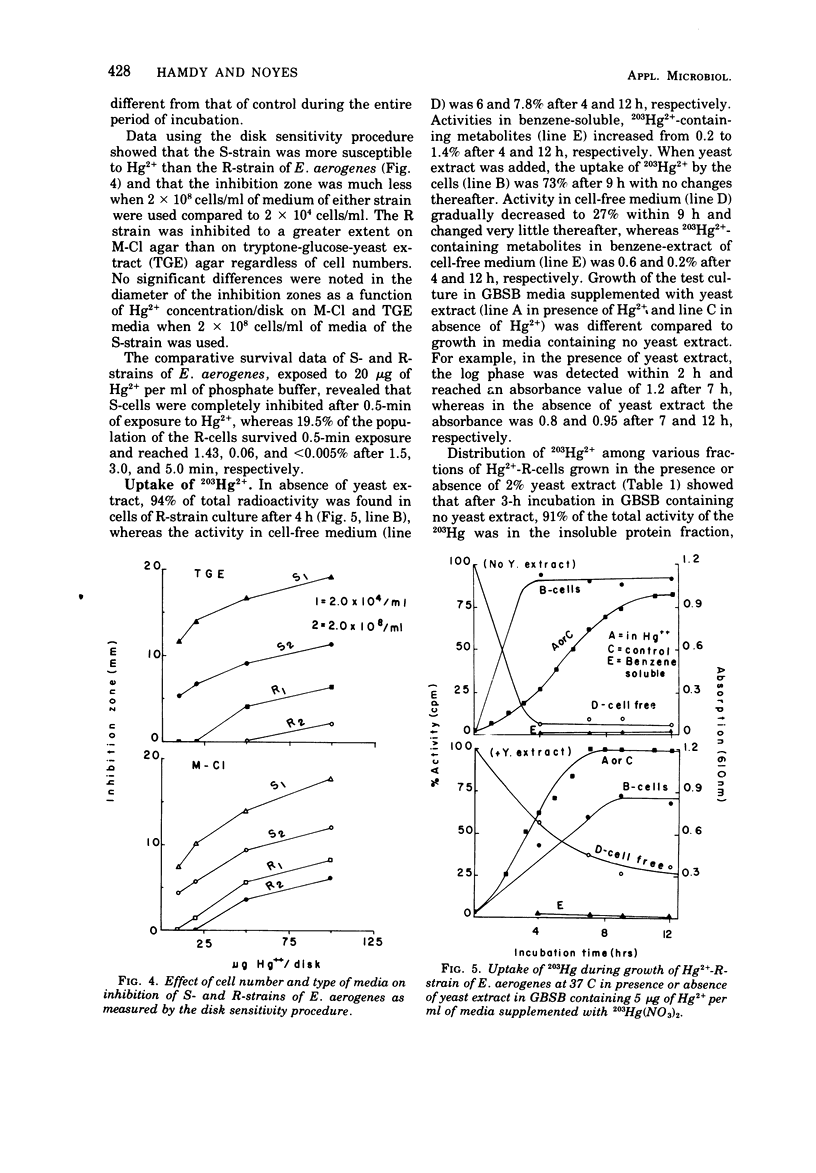
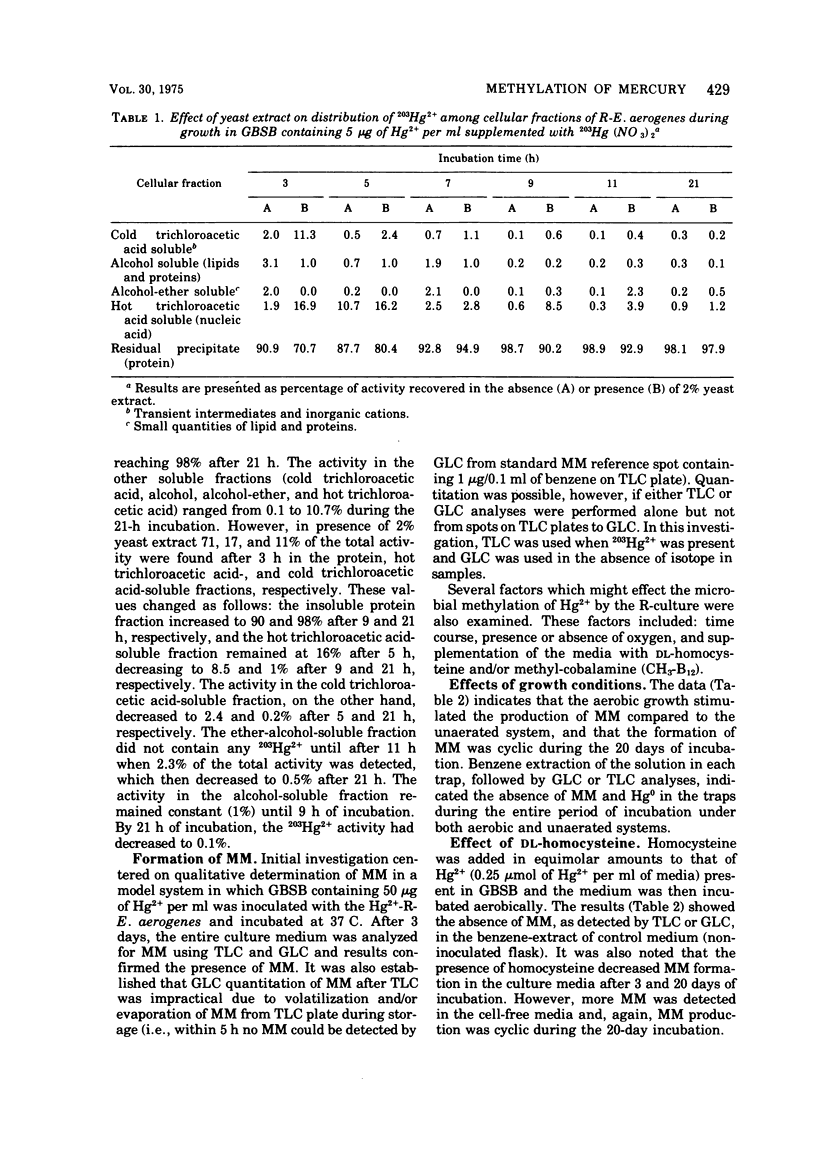
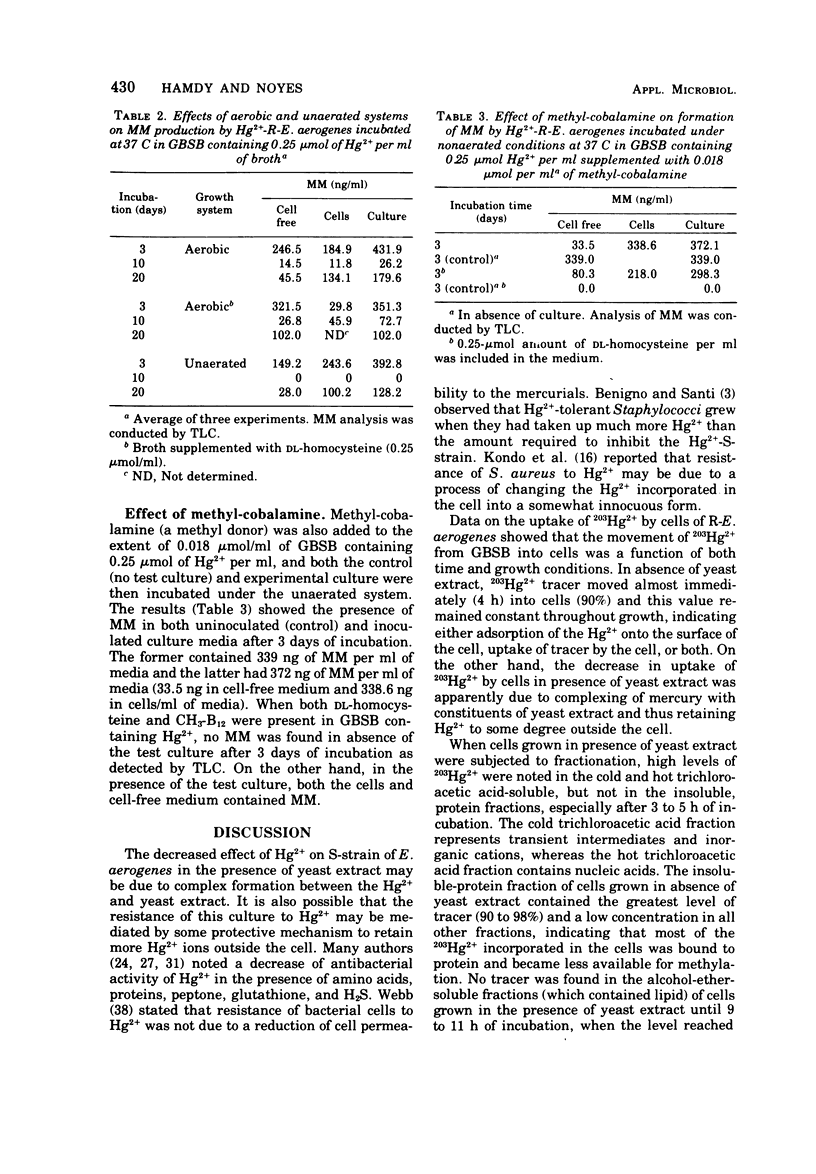
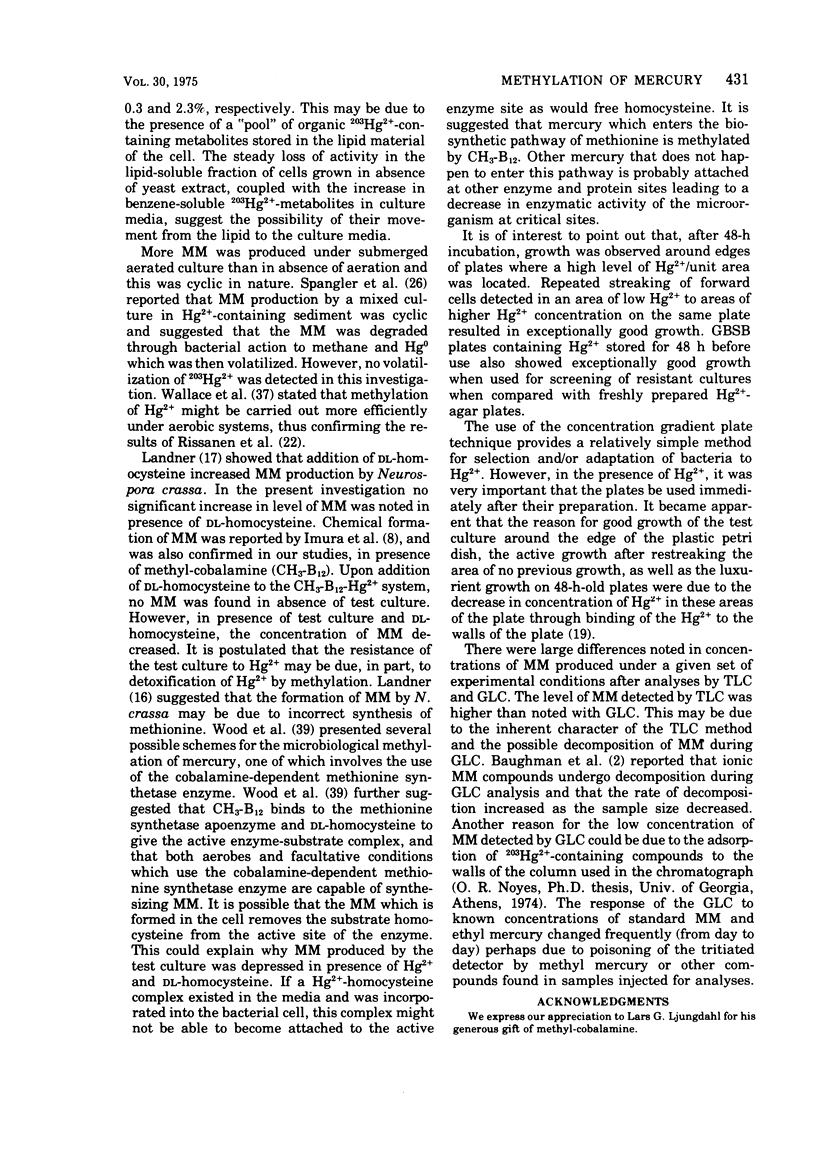
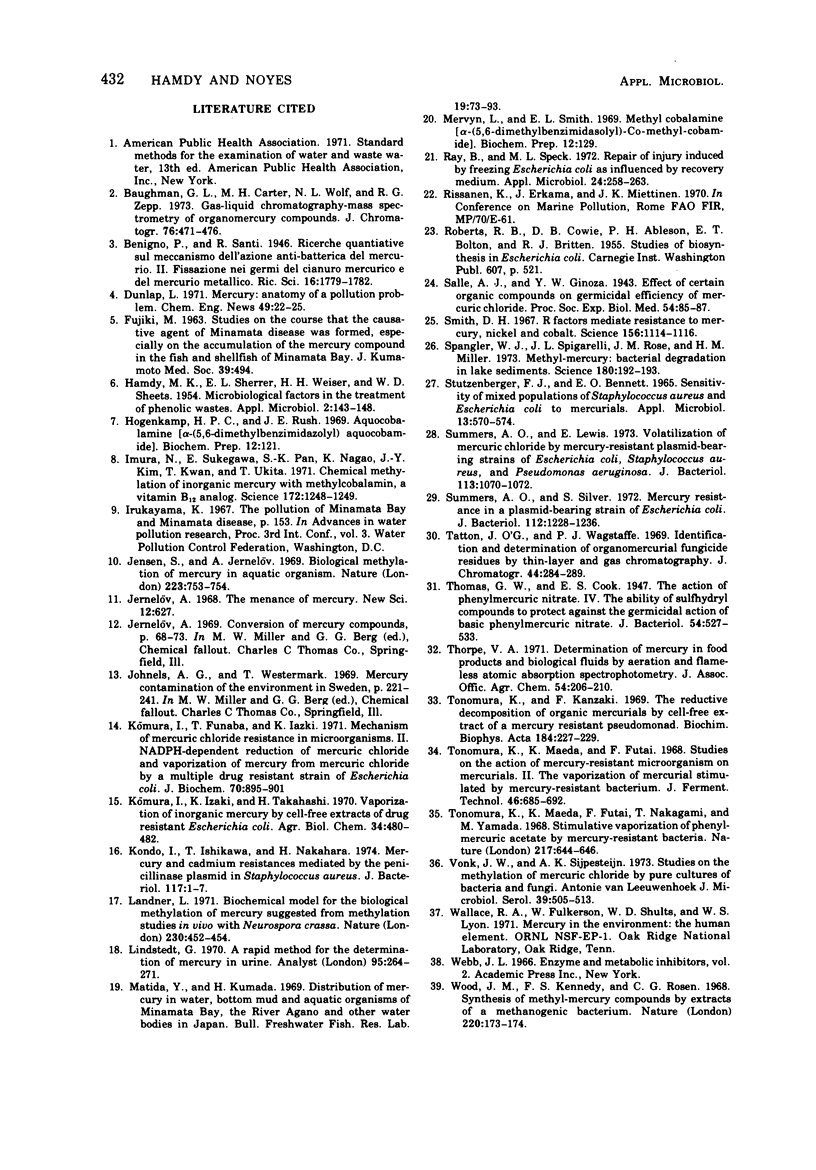
Selected References
These references are in PubMed. This may not be the complete list of references from this article.
- Baughman G. L., Carter M. H., Wolf N. L., Zepp R. G. Gas-liquid chromatography-mass spectrometry of organomercury compounds. J Chromatogr. 1973 Feb 28;76(2):471–476. doi: 10.1016/s0021-9673(01)96933-x. [DOI] [PubMed] [Google Scholar]
- HAMDY M. K., SHERRER E. L., WEISER H. H., SHEETS W. D. Microbiological factors in the treatment of phenolic wastes. Appl Microbiol. 1954 May;2(3):143–148. doi: 10.1128/am.2.3.143-148.1954. [DOI] [PMC free article] [PubMed] [Google Scholar]
- Imura N., Sukegawa E., Pan S. K., Nagao K., Kim J. Y., Kwan T., Ukita T. Chemical methylation of inorganic mercury with methylcobalamin, a vitamin B12 analog. Science. 1971 Jun 18;172(3989):1248–1249. doi: 10.1126/science.172.3989.1248. [DOI] [PubMed] [Google Scholar]
- Jensen S., Jernelöv A. Biological methylation of mercury in aquatic organisms. Nature. 1969 Aug 16;223(5207):753–754. doi: 10.1038/223753a0. [DOI] [PubMed] [Google Scholar]
- Komura I., Funaba T., Izaki K. Mechanism of mercuric chloride resistance in microorganisms. II. NADPH-dependent reduction of mercuric chloride and vaporization of mercury from mercuric chloride by a multiple drug resistant strain of Escherichia coli. J Biochem. 1971 Dec;70(6):895–901. doi: 10.1093/oxfordjournals.jbchem.a129719. [DOI] [PubMed] [Google Scholar]
- Kondo I., Ishikawa T., Nakahara H. Mercury and cadmium resistances mediated by the penicillinase plasmid in Staphylococcus aureus. J Bacteriol. 1974 Jan;117(1):1–7. doi: 10.1128/jb.117.1.1-7.1974. [DOI] [PMC free article] [PubMed] [Google Scholar]
- Landner L. Biochemical model for the biological methylation of mercury suggested from methylation studies in vivo with Neurospora crassa. Nature. 1971 Apr 16;230(5294):452–454. doi: 10.1038/230452a0. [DOI] [PubMed] [Google Scholar]
- Lindstedt G. A rapid method for the determination of mercury in urine. Analyst. 1970 Mar;95(128):264–271. doi: 10.1039/an9709500264. [DOI] [PubMed] [Google Scholar]
- Ray B., Speck M. L. Repair of injury induced by freezing Escherichia coli as influenced by recovery medium. Appl Microbiol. 1972 Aug;24(2):258–263. doi: 10.1128/am.24.2.258-263.1972. [DOI] [PMC free article] [PubMed] [Google Scholar]
- STUTZENBERGER F. J., BENNETT E. O. SENSITIVITY OF MIXED POPULATIONS OF STAPHYLOCOCCUS AUREUS AND ESCHERICHIA COLI TO MERCURIALS. Appl Microbiol. 1965 Jul;13:570–574. doi: 10.1128/am.13.4.570-574.1965. [DOI] [PMC free article] [PubMed] [Google Scholar]
- Smith D. H. R factors mediate resistance to mercury, nickel, and cobalt. Science. 1967 May 26;156(3778):1114–1116. doi: 10.1126/science.156.3778.1114. [DOI] [PubMed] [Google Scholar]
- Spangler W. J., Spigarelli J. L., Rose J. M., Miller H. M. Methylmercury: bacterial degradation in lake sediments. Science. 1973 Apr 13;180(4082):192–193. doi: 10.1126/science.180.4082.192. [DOI] [PubMed] [Google Scholar]
- Summers A. O., Lewis E. Volatilization of mercuric chloride by mercury-resistant plasmid-bearing strains of Escherichia coli, Staphylococcus aureus, and Pseudomonas aeruginosa. J Bacteriol. 1973 Feb;113(2):1070–1072. doi: 10.1128/jb.113.2.1070-1072.1973. [DOI] [PMC free article] [PubMed] [Google Scholar]
- Summers A. O., Silver S. Mercury resistance in a plasmid-bearing strain of Escherichia coli. J Bacteriol. 1972 Dec;112(3):1228–1236. doi: 10.1128/jb.112.3.1228-1236.1972. [DOI] [PMC free article] [PubMed] [Google Scholar]
- Tatton J. O., Wagstaffe P. J. Identification and determination of organomercurial fungicide residues by thin-layer and gas chromatography. J Chromatogr. 1969 Oct 28;44(2):284–289. doi: 10.1016/s0021-9673(01)92539-7. [DOI] [PubMed] [Google Scholar]
- Thomas G. W., Cook E. S. The Action of Phenylmercuric Nitrate: IV. The Ability of Sulfhydryl Compounds to Protect against the Germicidal Action of Basic Phenylmercuric Nitrate. J Bacteriol. 1947 Oct;54(4):527–533. [PMC free article] [PubMed] [Google Scholar]
- Thorpe V. A. Determination of mercury in food products and biological fluids by aeration and flameless atomic absorption spectrophotometry. J Assoc Off Anal Chem. 1971 Jan;54(1):206–210. [PubMed] [Google Scholar]
- Tonomura K., Kanzaki F. The reductive decomposition of organic mercurials by cell-free extract of a mercury-resistant pseudomonad. Biochim Biophys Acta. 1969 Jun 17;184(1):227–229. doi: 10.1016/0304-4165(69)90124-x. [DOI] [PubMed] [Google Scholar]
- Tonomura K., Maeda K., Futai F., Nakagami T., Yamada M. Stimulative vaporization of phenylmercuric acetate by mercury-resistant bacteria. Nature. 1968 Feb 17;217(5129):644–646. doi: 10.1038/217644b0. [DOI] [PubMed] [Google Scholar]
- Vonk J. W., Sijpesteijn A. K. Studies on the methylation of mercuric chloride by pure cultures of bacteria and fungi. Antonie Van Leeuwenhoek. 1973;39(3):505–513. doi: 10.1007/BF02578894. [DOI] [PubMed] [Google Scholar]
- Wood J. M., Kennedy F. S., Rosen C. G. Synthesis of methyl-mercury compounds by extracts of a methanogenic bacterium. Nature. 1968 Oct 12;220(5163):173–174. doi: 10.1038/220173a0. [DOI] [PubMed] [Google Scholar]


